EASTERN BUHTAN
Local and international tourists least travel eastern regions of Bhutan, due to the poor roads conditions that leading into eastern region. The rough and narrow roads that goes through the eastern Bhutan makes it a good opportunity for travellers to explore. Most of the populations live in a remote settlement; high above the road or in isolated valleys and some are homes to the minority ethnic groups comprising less than 1000 people.
Highlights:
- Beauty of the least touched area, both environmentally and culturally.
- Hiking and birding off the beaten track in Thrumshing La National Park.
- Khoma Village, production house of some of Bhutan’s most sought-after kushutara (Bhutanese silk-weaving technique)
Sites
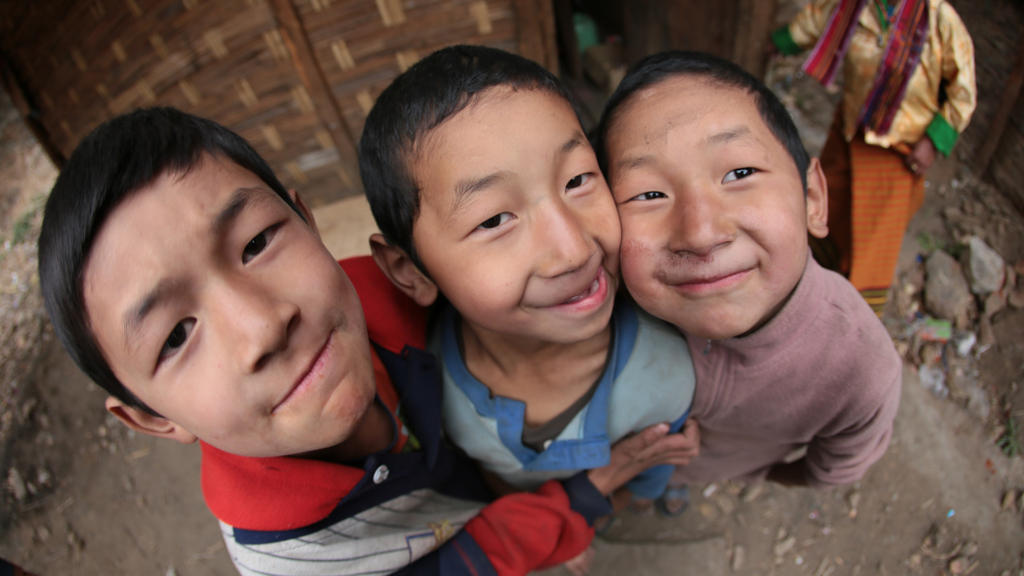
Gangzui Village
Gangzui Village is situated around two kilometres from the Trongsa Dzong. This village is famous for its pottery as the women folk are skilled artisans of this dying art. The Government is now making efforts to revive it through financial support. When in Gangzui you will definitely want to witness the women displaying their skills.
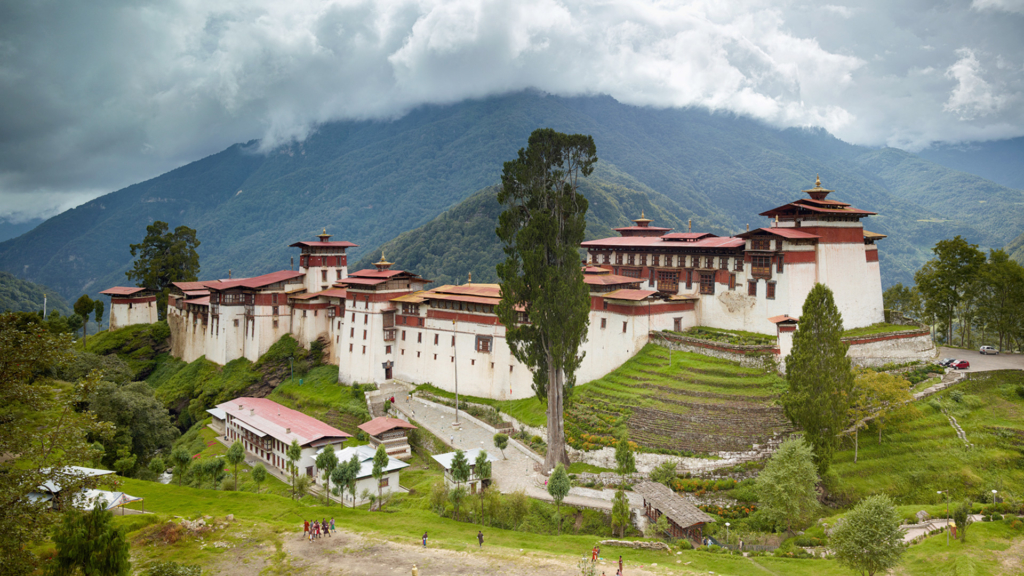
Trashigang
Trashigang, “The Jewel of the East”, spans the easternmost corners of the kingdom, skirting up to the edge of the Indian state of Arunachal Pradesh. It is the country’s largest district, with an altitude ranging from 600m to over 4000m.
Bhutan’s largest river, the Dangmechu, flows through this district. Trashigang town is set on a scenic hillside and was once a bustling trade center for merchants looking to barter their goods in Tibet.
Today it is the junction of the East-West highway, with road connections to Samdrup Jongkhar and then into the Indian state of Assam. Trashigang town is also the principle market place for the semi-nomadic people of Merak and Sakteng, whose unique way of dress stands out from the regular Bhutanese Gho and Kira.

Lhuntse
In the northeast corner of Bhutan lies the ancient region of Kurtoe or Lhuntse as it is known today. It is the ancestral home of our Kings and hosts several of the sacred sites of pilgrimage in the country. It is located 77km from Mongar (3 hours’ drive) and is one of the most isolated districts in Bhutan.
The landscape is spectacular, with stark cliffs towering above river gorges and dense coniferous forests. The region is famous for its weavers, and their distinctive textiles are generally considered to be the best in the country. Kurtoep women are especially adept at weaving a textile called Kishuthara.

Gangzur Village
Situated around two kilometers from the Dzong, this village is famous for its pottery as its women folk are skilled artisans of this dying art. The Government is now making efforts to revive it through financial support. When in Gangzur, you will definitely want to witness the women displaying their skills, so don’t miss out on the opportunity.

Khoma Village
This village is located about two hours walk from the Dzong. It is a pleasant journey taking you over gentle slopes amongst pine trees. This village is known throughout the country for its signature woven textile, the Kishuthara. The women sit in a row a makeshift textile cottage, weaving intricate designs and patterns. Picking up a Kishuthara here will be much cheaper than buying one from the handicraft shops in the capital.

Mongar
The road approaching Mongar is one of the most spectacular journeys in the country. It passes over sheer cliffs and through beautiful fir forests and green pastures. Travellers passing this way will have the opportunity to visit the Rhododendron garden. There are countless varieties of Rhododendrons here and on clear days you can even catch a glimpse of Gangkhar Puensum (7541 meters), the world’s highest unclimbed mountain.
Mongar, one of the six districts that make up eastern Bhutan borders Bumthang, Lhuentse, Pema Gatshel and Trashigang. The district covers an area of 1,954 sq/kms with elevations ranging from 400m to 4,000m and has a population of about 38,000. The landscape is spectacular with stark cliffs and deep gorges set amidst dense conifer forests. The region is known for its weavers and textiles and fabrics produced here are considered some of the best in the country.
In the past this region was known as the bastion of the Zhongarps as it produced some of the finest administrators in the country whose descendants still continue to play an active part in the political scene of Bhutan.

Mongar Town
Like many other settlements in Eastern Bhutan, Mongar town is situated atop a hill rather than within a valley. This town is considered the main trade and travel hub of eastern Bhutan and most travellers and merchants active in East pass through here, often spending the night at one of the local hotels. The main street is lined with traditionally painted stone buildings with wooden facades and verandas. Near the clock tower there is a large prayer wheel around which people often gather to meet old friends and chat. The local restaurants offer a decent variety of Bhutanese and Indian cuisine.
Point of Interest
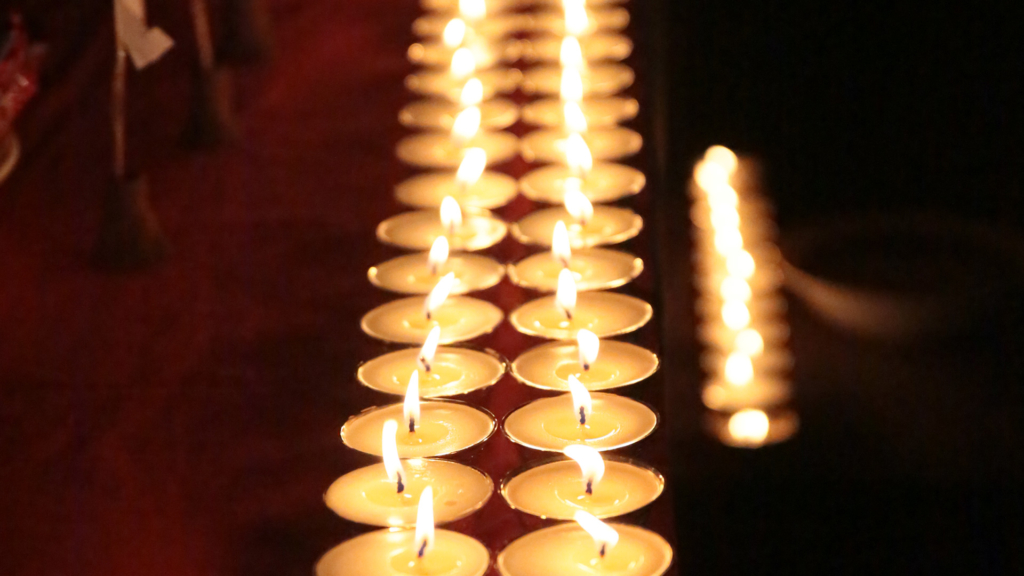
Drametse Lhakhang
One of the most notable religious sites is the Drametse Lhakhang. It was built in the 16th century by Ani Cheten Zangmo, the daughter of the renowned Terton (religious treasure seeker) Pema Lingpa. The Dramitse Ngacham or the “Dance of the Drums of Dramitse,” was created in this Lhakhang in the 16th century. Today, its popular dance is performed in all major festivals and it is also on the esteemed UNESCO World Heritage list.
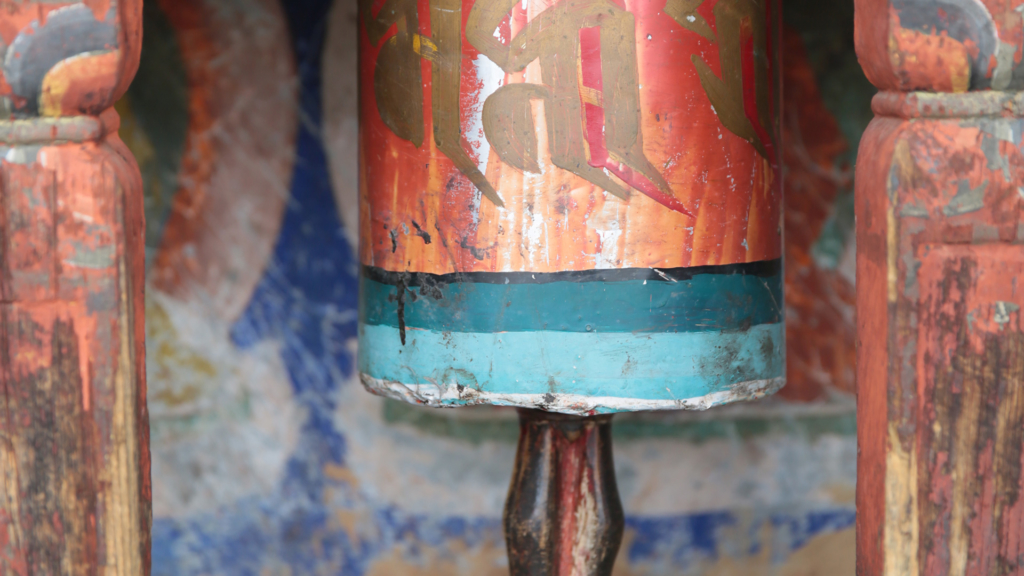
Mongar Dzong
Although built in the 1930s and one of Bhutan’s newest dzongs, it was constructed in the same way as all the earlier dzongs, without plans or even nails to keep them together.
However unlike the earlier Dzongs, that are located in strategic positions, Mongar Dzong is located on a small gently sloping area just above the town. A visit to Mongar Dzong demonstrates how traditional Bhutanese architecture has continued to thrive through the centuries.
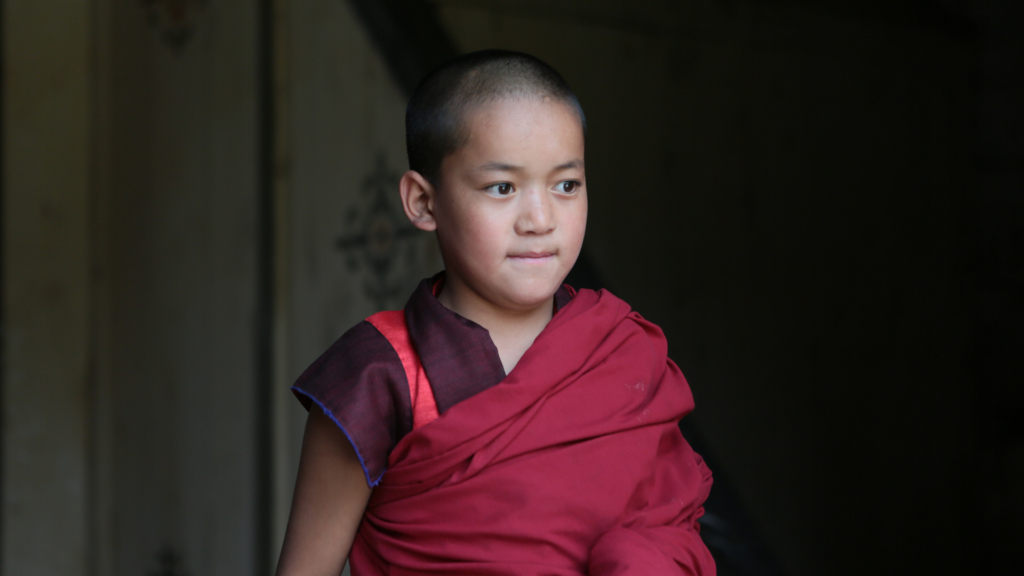
Singye Dzong
It is one of the most sacred and isolated sites in the country, which takes three days on foot to reach the site from the nearest road head in Khoma village. Singye Dzong in Lhuentse is considered the most sacred site of Guru Rinpoche in Bhutan and is not connected by road nor open to tourists. Genuine and devoted tourists have to obtain a special permit from the Department of Culture to visit the site.
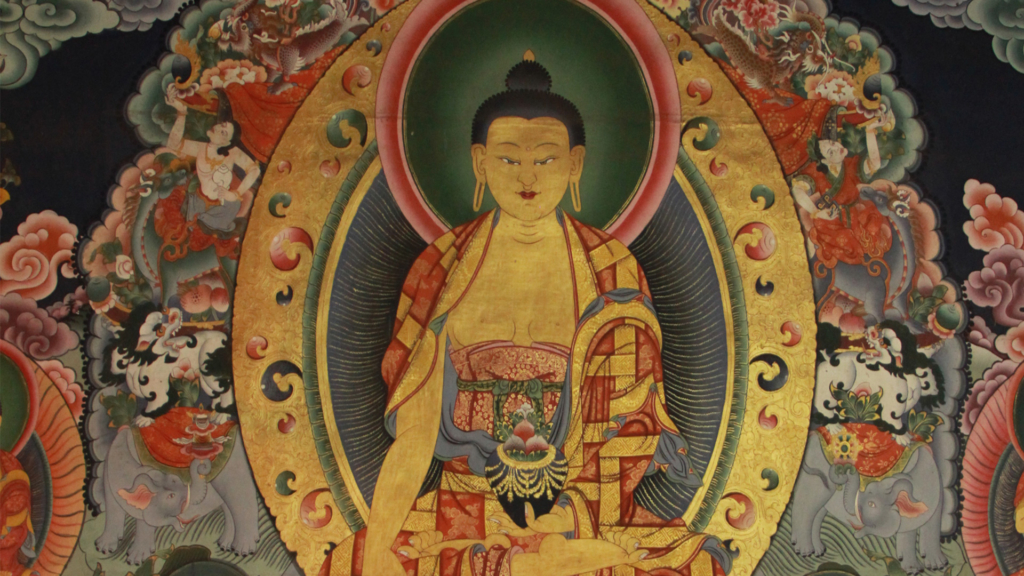
The Zangtopelri
This three-story temple set in the middle of town is adorned with the work of skilful master Bhutanese craftsmen. Its intricate frescos and beautiful statues are truly a sight to behold. Due to its religious significance and convenient location, the Zangtopelri is at the heart of the spiritual lives of the people of this area.
Mount Meru is the site of the palace of the Druk Chhoglay Namgyal (victory of Bhutanese Over enemies in all directions). It is accessible only from the north, via a narrow road, paved by blasting through the cliff-side. Due to its location Trashigang Dzong is one of the most strategically placed Dzongs in Bhutan. Dzongpon Dopola enlarged the present Dzong, in 1936.
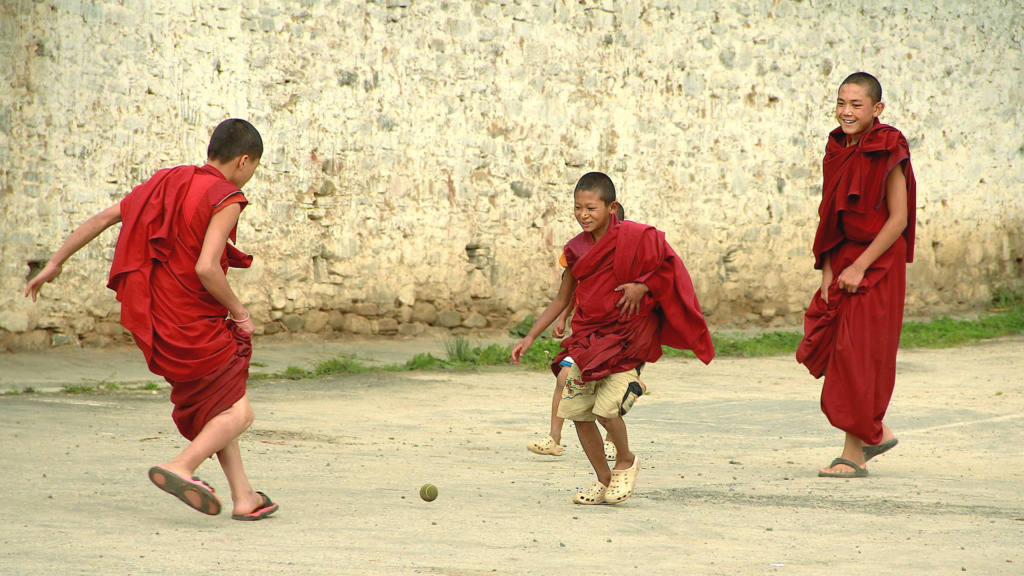
Yagang Lhakhang
Yagang Lhakhang, which is located in a small village next to the town, is another sacred monument in the Dzongkhag. It was built by Sangdag, the youngest son of Terton Pema Lingpa in the 16th century, after the Kupijigtsam Lhakhang in Yangneer village in Trashigang was completed. Today, the Lhakhang plays an important role in the religious life of the people.

Trashigang Dzong
Trashigang Dzong or “The Fortress of the Auspicious Hill” was built in 1659, to defend against Tibetan invasions. This imposing fortress is strategically situated high atop a spur overlooking the Dangmechu River. According to legend, it is said that upon seeing the Dzong, invading Tibetan armies remarked that the Dzong was “not on the ground.” Calling it a “Sky Dzong” before retreating, it has so far been the political stronghold of Eastern Bhutan for over 300 years.
Mount Meru is the site of the palace of the Druk Chhoglay Namgyal (victory of Bhutanese Over enemies in all directions). It is accessible only from the north, via a narrow road, paved by blasting through the cliff-side. Due to its location Trashigang Dzong is one of the most strategically placed Dzongs in Bhutan. Dzongpon Dopola enlarged the present Dzong, in 1936.

Jangchubling Monastery
This is another monastery that is definitely worth paying a visit. It was founded in the 18th century by Pekar Gyatso and until recently was under the patronage of the 16th Karmapa Rangjung Rigpe Dorji. The King’s 1st daughter, Ashi Wangmo lived here at the monastery as a nun. The monastery is easily accessible from a feeder road.

Samdrup Jongkhar
Samdrup Jongkhar town holds the distinct honor of being the oldest town in Bhutan. This border town is a bustling little settlement packed to the brim with shopkeepers and hawkers from across the border.
There are several well maintained hotels, most of which serve a good mix of Bhutanese, Indian and continental cuisine. As a border town, Samdrup Jongkhar is often used as the entry point for merchants and tourists entering Eastern Bhutan overland.
The gateway to Eastern Bhutan, Samdrup Jongkhar is situated in the southeastern region of the country and shares borders with the Indian state of Assam. It is by far the largest urban center in eastern Bhutan. It lies at elevations ranging from 200m to 3,500m. In the past, many British Political Officers stationed in Sikkim took the route from Samdrup Jongkhar to enter into Bhutan. Historically the region was administered by the Gyadrung stationed at Dewangiri.
Today the road from Trashigang to Samdrup Jongkhar, completed in the 1960s, connects the eastern and southern regions of the country, allowing them to benefit from trade, especially through trade across the Indian border. In the past Samdrup Jongkhar was the main trading center for the Bhutanese and it is still a convenient exit town for tourists who have arranged to visit the neighboring Indian state of Assam.

Kilung Lhakhang
The tiny village of Kilung is a twenty-minute drive from the Dzong enroute towards Kurtoe Dungkharg. This village is inhabited by the Tshanglas who migrated and settled here during the late 1880’s. In the village you will come across the Kilung Lhakhang situated on a ridge overlooking the Kurichu River. It was built on the former site of the Kilung Gyalpo, a regional chieftain. This temple houses the sacred chain mall that was once used to recapture a statue that miraculously flew away from the Lhuentse Dzong.

Samdrup Jongkhar Dzong
This Dzong serves as the administrative center of the district and is one of the newest Dzongs to have been built in the country. Unlike other Dzongs that are built on strategic locations atop mountains or between rivers, the Dzong in Samdrup Jongkhar is built on a flat and fairly wide-open area.

The Dratshang
This Dratshang was only recently constructed next to the Dzong. It houses the monk body and has many new novices looked after by the religious functionaries.

Dewathang
Dewathang is the site where Jigme Namgyal, the father of Gongsar Ugyen Wangchuck led the Bhutanese troops in a final battle against the British in 1884. Though the Bhutanese put up a strong resistance against the British, Jigme Namgyal ultimately signed the treaty of Sinchula with the British in 1865.The office of the Gyadrung, the district administrator was once located in this small town situated 18 kilometers from Samdrup Jongkhar.

Zhongar Dzong
The ruin of Zhongar Dzong endures to this day as a testimony to the skill of its builders, most notably the renowned master craftsman, Zowo Balip. It is located on a hilltop overlooking the village of Themnangbi and is visible as one descends to Lingmenthang from the highway. Constructed in the 17th century, the Dzong believed to have been built at a site where the master architect Zow Balip saw a white bowl. A visit to the ruins can be a memorable experience and will give you a sense of medieval Bhutanese administration.

Aja Ney
The ruin of Zhongar Dzong endures to this day as a testimony to the skill of its builders, most notably the renowned master craftsman, Zowo Balip. It is located on a hilltop overlooking the village of Themnangbi and is visible as one descends to Lingmenthang from the highway. Constructed in the 17th century, the Dzong believed to have been built at a site where the master architect Zow Balip saw a white bowl. A visit to the ruins can be a memorable experience and will give you a sense of medieval Bhutanese administration.

Trashigang Dzong
Trashigang Dzong or “The Fortress of the Auspicious Hill” was built in 1659, to defend against Tibetan invasions. This imposing fortress is strategically situated high atop a spur overlooking the Dangmechu River. According to legend, it is said that upon seeing the Dzong, invading Tibetan armies remarked that the Dzong was “not on the ground.” Calling it a “Sky Dzong” before retreating, it has so far been the political stronghold of Eastern Bhutan for over 300 years.
Mount Meru is the site of the palace of the Druk Chhoglay Namgyal (victory of Bhutanese Over enemies in all directions). It is accessible only from the north, via a narrow road, paved by blasting through the cliff-side. Due to its location Trashigang Dzong is one of the most strategically placed Dzongs in Bhutan. Dzongpon Dopola enlarged the present Dzong, in 1936.

Lhuntse Dzong
This mighty fortress, popularly known as Lhundub Rinchentse sits upon a hill overlooking the Kurichu River. It was constructed in 1654 by the Trongsa Penlop Chogyal Minjur Tempa upon the site of an older temple built by Nagi Wangchuk in 1552. Today the dzong is the administrative and the religious centre of the district. It houses many sacred artifacts that were installed by the 4th Druk Desi Tenzin Rabgay.

Jangchubling Monastery
This is another monastery that is definitely worth paying a visit. It was founded in the 18th century by Pekar Gyatso and until recently was under the patronage of the 16th Karmapa Rangjung Rigpe Dorji. The King’s 1st daughter, Ashi Wangmo lived here at the monastery as a nun. The monastery is easily accessible from a feeder road.

Dungkar Nagtshang
The house of Dungkar, one of the noble lineages from Kurtoe was home to the Trongsa Penlop Jigme Namgyal, the father of the Wangchuck dynasty. Dungkar Naktshang the ancient home of the Dungkar Chojie and the ancestral home of the Wangchuck Dynasty, stands amid a scenic backdrop of towering mountains overlooking the tiny Dungkar village below. There is a 40km dirt road from Lhuentse leading up to Dungkar Lhakhang. The Dungkar expedition is an exciting and magical voyage into Bhutan’s past.

